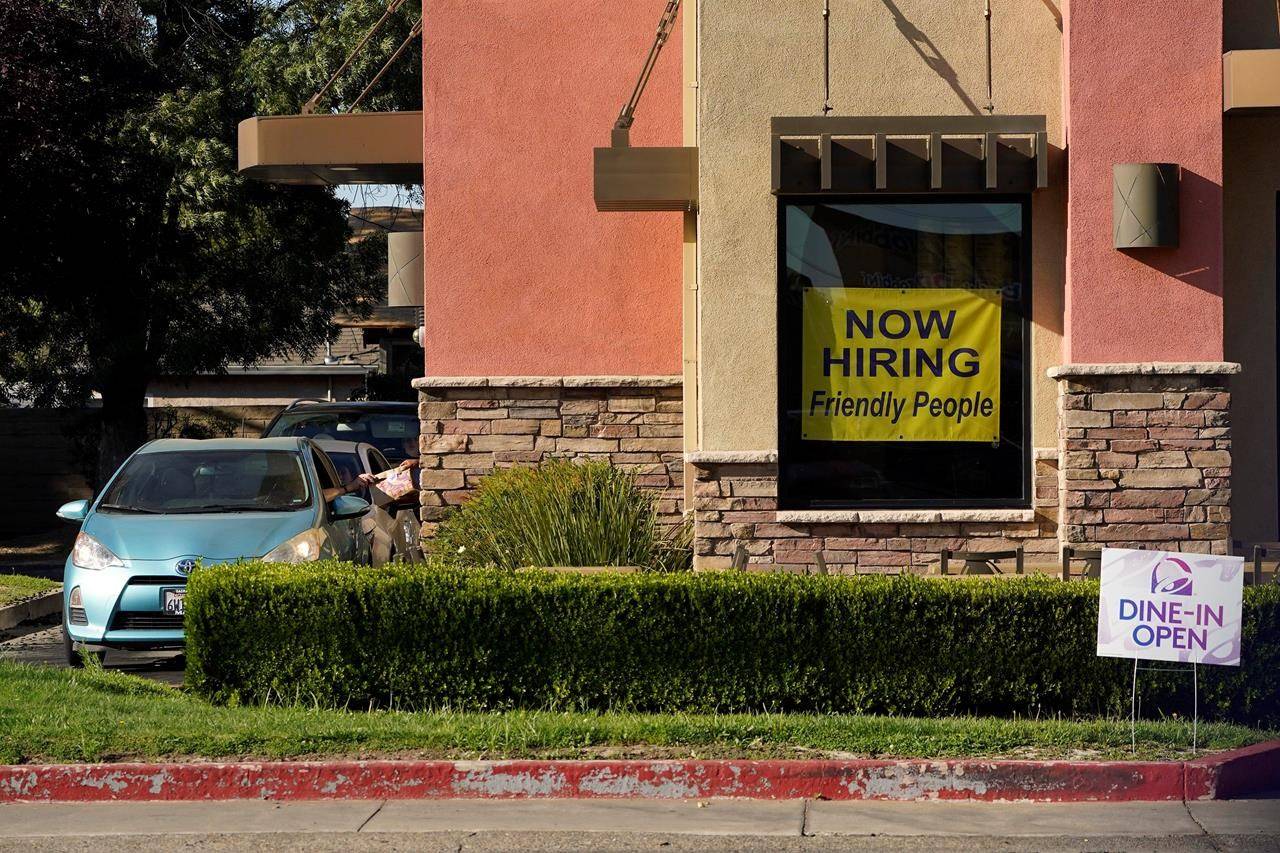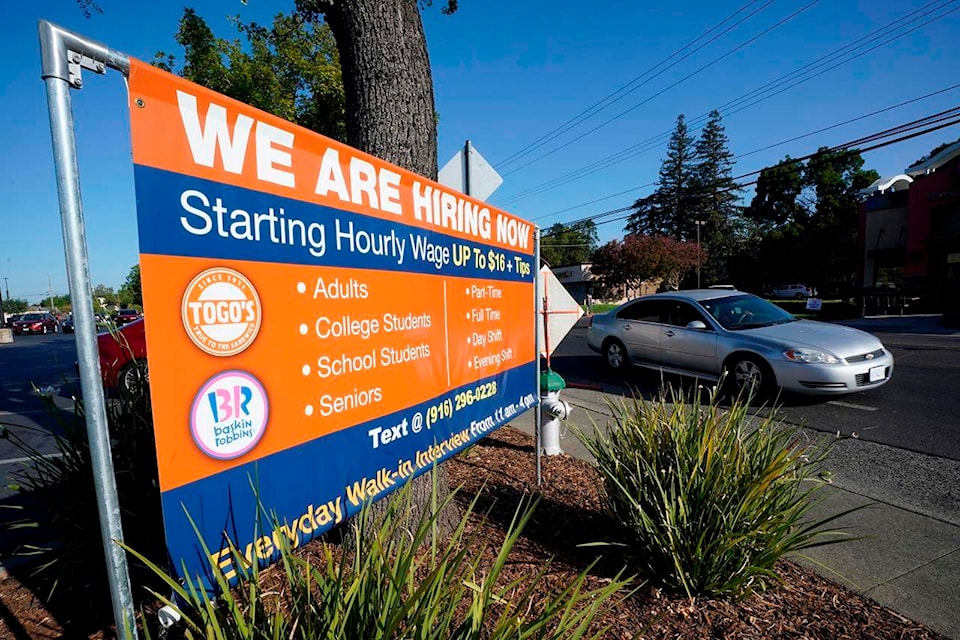WASHINGTON — The number of Americans seeking unemployment benefits rose last week from the lowest point of the pandemic, even as the job market appears to be rebounding on the strength of a reopened economy.
The Labor Department said Thursday that jobless claims increased last week to 419,000, the most in two months, from 368,000 the previous week. The number of first-time applications, which generally tracks layoffs, has fallen steadily since topping 900,000 in early January.
Economists characterized last week’s increase as most likely a blip caused by some one-time factors and partly a result of the inevitable bumpiness in the week-to-week data. Applications for jobless aid jumped last week, for example, in Michigan, where GM has announced that it’s shutting down truck production because of supply shortages.
“I do not worry that this reading signals a sudden weakening in labour demand,” said Stephen Stanley, an economist at Amherst Pierpont Securities. “In fact, I am quite confident that it does not.”
Americans are shopping, travelling and eating out more as the pandemic has waned, boosting the economy and forcing businesses to scramble for more workers. Companies have posted the highest number of available jobs in the two decades that the data has been tracked. Hiring has picked up, though businesses say they often can’t find enough employees at the wages they’re willing to pay.
At the same time, analysts are becoming concerned about the potential economic consequences of a tick-up in confirmed viral infections as the highly contagious delta variant spreads, especially among the unvaccinated. The seven-day rolling U.S. average for daily new cases accelerated over the past two weeks to more than 37,000 as of Tuesday, from fewer than 13,700, according to data from Johns Hopkins University.
Complaints by companies that they can’t find enough workers have led 22 states to prematurely end a $300-a-week federal unemployment benefit, which comes on top of state jobless aid. Twenty states have ended their participation in two other federal programs — one of which provides benefits to the self-employed and gig workers and and another that serves people who have been out of work for six months or longer.
Officials in two other states, Indiana and Maryland, had sought to end the supplemental aid programs but were blocked by court rulings. Nationally, the programs will all expire in early September.
The early cut-offs of expanded unemployment aid have contributed to a steady decline in the number of people receiving unemployment benefits. That number fell to 12.6 million in the week ending July 3, the latest period for which data is available, down from 13.8 million the previous week. More than 600,000 recipients of unemployment aid were cut off in Texas alone.
The long-term decline in applications for jobless aid coincides with accelerating economic growth. The U.S. economy is thought to have expanded briskly during the April-June quarter as Americans, flush with cash from stimulus checks and from stock market and home equity, stepped up their spending.
Purchases at retail stores and restaurants rose in June, the government said last week. Retail sales are roughly 20% above pre-pandemic levels.
The ranks of the jobless have declined as companies have stepped up hiring. In June, employers added a healthy 850,000 jobs, further evidence that the reopening of the economy was driving a robust recovery from the pandemic recession.
The June jobs data also suggested that workers were enjoying an advantage as companies, desperate to fill positions, offered higher wages. Average hourly pay rose a solid 3.6% compared with a year earlier. That said, the economy still has 6.8 million fewer jobs than it did before the virus erupted in March of last year.
Applications for unemployment aid are typically seen as a rough measure of the pace of layoffs. During the pandemic, though, many states were beset by fraudulent claims that distorted the data.
A watchdog report released this week found that states distributed $12.9 billion in excess unemployment benefit payments from April 2020 through this March, with about one-tenth of the amount turning out to be fraudulent. Some of the remaining money might also have involved fraud but won’t be classified as such until it is investigated.
The GAO also found that many people out of work still had to wait an extended period for their jobless aid applications to be processed and approved. Nationally, about one in 10 people who first received benefits in May had waited more than 10 weeks for it.

